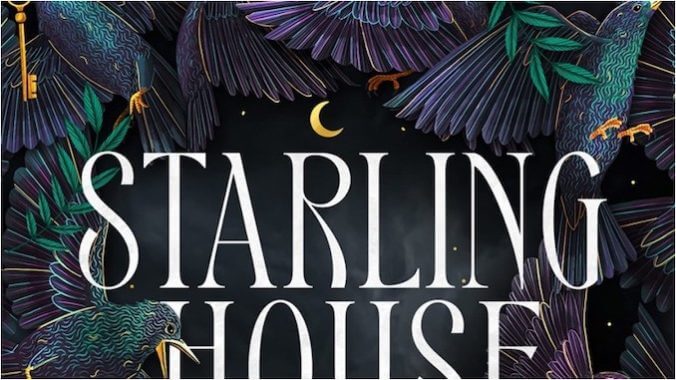Starling House: A Cynical Protagonist Grounds This Strangely Sweet Haunted House Story

“There is no such thing as curses or cracks in the world. Maybe that’s all a good ghost story is, a way of handing out consequences to the people who never got them in real life.”
Alix E. Harrow’s Starling House is many things: A ghost story, a romance, a family drama, a haunted house saga, an exploration of rage and exploitation. It’s a perfect read for Fall, full of dark shadows and foreboding vibes, a story about the monsters that lurk in imagined places and those that exist in the harsh light of the real world. It’s about lost people and broken places, and the longing for a place to belong.
Its style is perhaps best described as a cozy horror—there’s nothing too scary about the book in terms of blood or gore, though several people are killed over the course of the story. The setting is perhaps its most disturbing aspect, mixing familiar everyday elements of dying former industrial towns across America with the unsettling sort of supernatural activity that hints at darker forces at work in the land than most of us would recognize.
Starling House follows the story of Opal, a young woman stuck in the dying coal town of Eden, Kentucky. Like most of the folks in Eden, she’s poor and struggling to make ends meet, desperate to figure out a way to get her talented, asthmatic younger brother Jasper out of a place that’s brought nothing but pain and bad luck to her family. When an opportunity arises at the infamous Starling House, she jumps at the chance for a bigger paycheck, even if it means going to work every day in a place that literally haunts her dreams. To her surprise, she finds herself strangely fascinated by the latest Starling heir—Arthur, a broody, reclusive young man who is clearly keeping more than his fair share of secrets, about both himself and the house in his charge.
As Opal gets to know Arthur and learns more about the original Eleanor Starling, who built the residence that’s named for her and penned a popular children’s book called The Underland before essentially vanishing, she slowly begins to unearth more about truths herself, her strange connections to the house, and the family she never knew. Arthur, for his part, is lonely and miserable, determined that he will be the last Warden of Starling House—at least until he meets Opal and slowly begins to realize that he’s allowed to want more for his life than a family curse with a predetermined fate. Though the pair spend a significant portion of the book at odds, there’s always a sense there’s an undercurrent of something more between them, as these two lost souls find a way to be a little less lonely together.
-

-

-

-

-

-

-

-

-

-

-

-

-

-

-

-

-

-

-

-

-

-

-

-

-

-

-

-

-

-

-

-

-

-

-

-

-

-

-

-








































